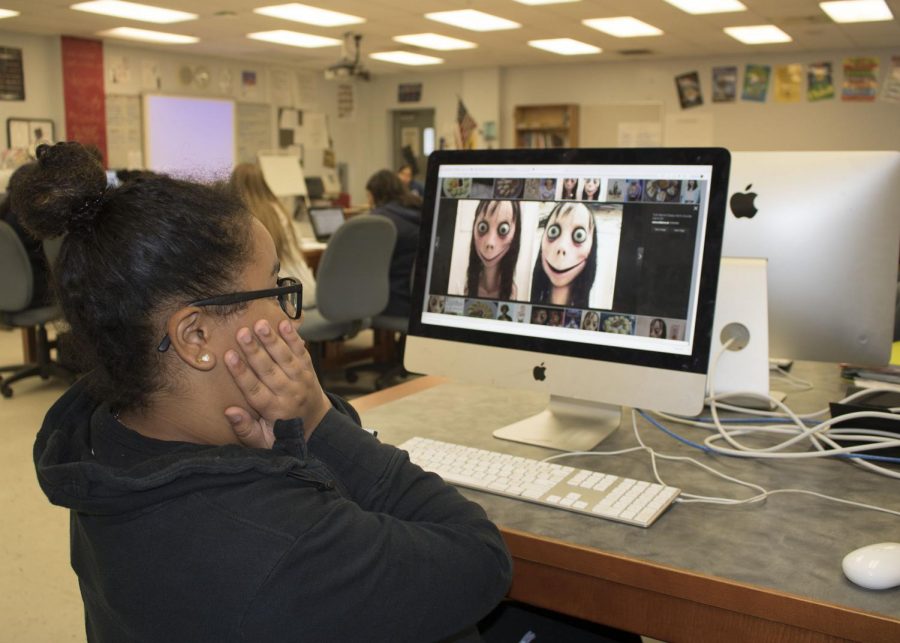The Latest Challenge: Suicide
Student shocked by the horrific sight of Momo.
May 17, 2019
In August of last year, two teens in Colombia committed suicide after seeing a Momo video.
In April of last year, a twelve-year-old overdosed while following the orders of the Blue Whale Challenge.
In 2015, under the direction of Charlie Charlie, kids around the world tried summoning the dead.
Momo, Blue Whale, and Charlie Charlie may sound like cute social media games but are internet challenges that have cost viewers their lives and given parents unbelievable anguish.
“They are dangerous, to the fact that a lot of kids are dying and it’s not fair to their parents,” said Marcela Pino, a junior at South Broward High School.
Momo is a scarecrow-like figure that randomly appears on toddlers’ youtube videos, then scares the children by saying that if they don’t kill the first person near them, they have to kill themselves. The final threat is that if they don’t do this, then Momo will appear and kill them.
The Blue Whale Challenge is a set of dares for fifty days, starting with watching scary movies at 3 a.m. to carving a whale into your arm. When the dares are complete they must commit suicide.
Parents who rarely use the internet would be oblivious to the suicide challenges if it weren’t for other sources.
“I find out about the challenges through the news,” said Irma Munoz, a mother of two girls of the ages 8 and a 17.
In a recent local study conducted on Instagram out of 95 people, 89% find out about challenges through social media. Out of 108 people, only 41% have been involved in these simple challenges.
Those who responded to the survey commented on the fact that they never did a dangerous challenge such as the tide pod crisis that took place a few years ago.
There are other challenges that don’t result in death but do result in harm. Such as the cinnamon challenge that is based on a person attempting to swallow cinnamon powder for 60 seconds without any liquids.
The Pediatrics journal released an article last year stating that “the stunt has led to a growing number of calls to poison control centers and visits to emergency rooms. Some teenagers have suffered collapsed lungs and ended up on ventilators.”
One reason people accept these challenges could be the influence of social media stars, also known as influencers. Some of these influencers include Shane Dawson, Glozella and Pewdiepie. And out of 85 people, 95% of them agree with this.
“They idolize their success and want to obtain those inflated personalities,” said Shelby Jean, a senior at SBHS.
Besides with idolizing someone, there are many personal afflictions that cause teens to do unsafe challenges, which both adults and teenagers agree that those dangerous challenges are “stupid.”
“People want to be cooler and better than others,” said Munoz.
Along with trying to satisfy their ego, many believe that it is a cry for attention. Out of 88 people surveyed, 90% agree with this statement.
“Those who do this have low self-esteem and they want attention,” said Munoz.
Both parents and teenagers agree that there is no sure solution. Parents cannot control and supervise each second of their child’s life, but they must be aware of what is going on in it. One possibility is for parents to filter and place restrictions on what children can search for and watch. But, talking about the subject with your child should always be the first resort.
“There’s always going to be things like this, but what matters is the guide and education that you give your kids,” concluded Munoz.



